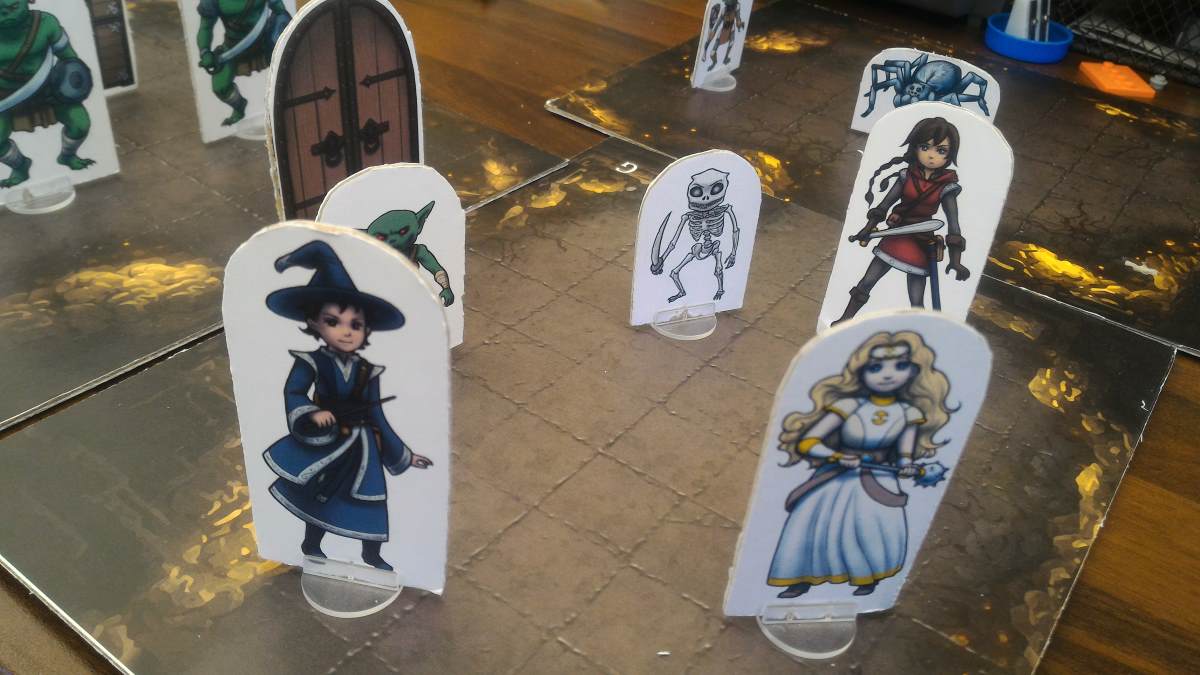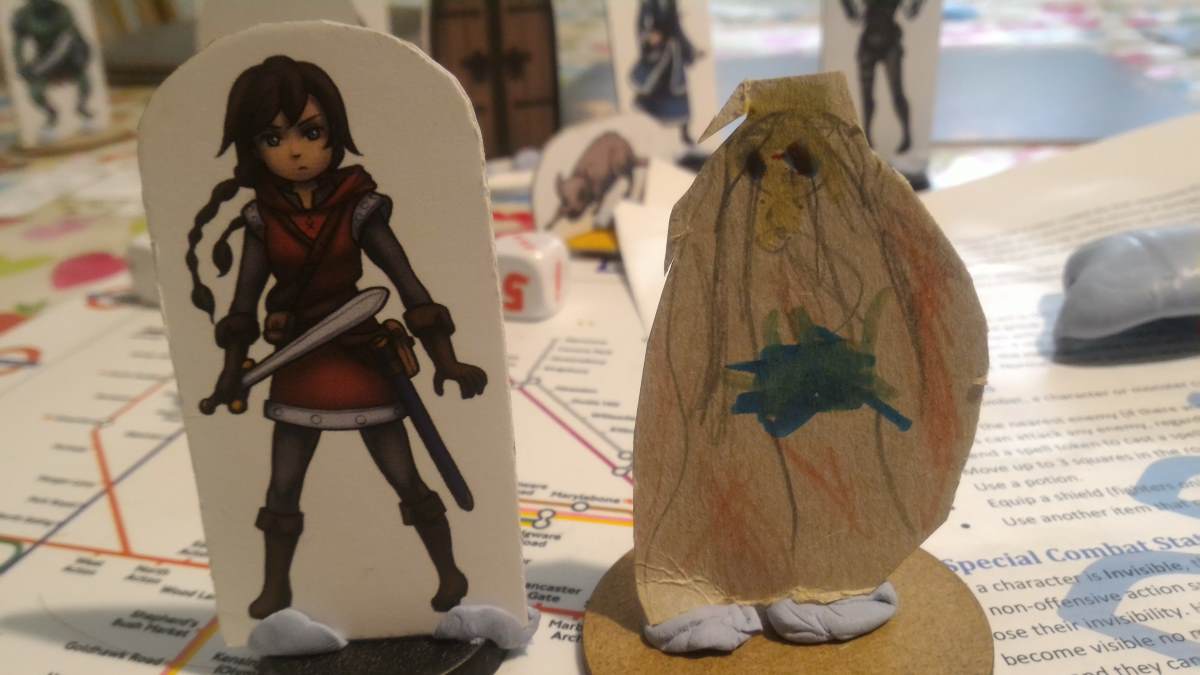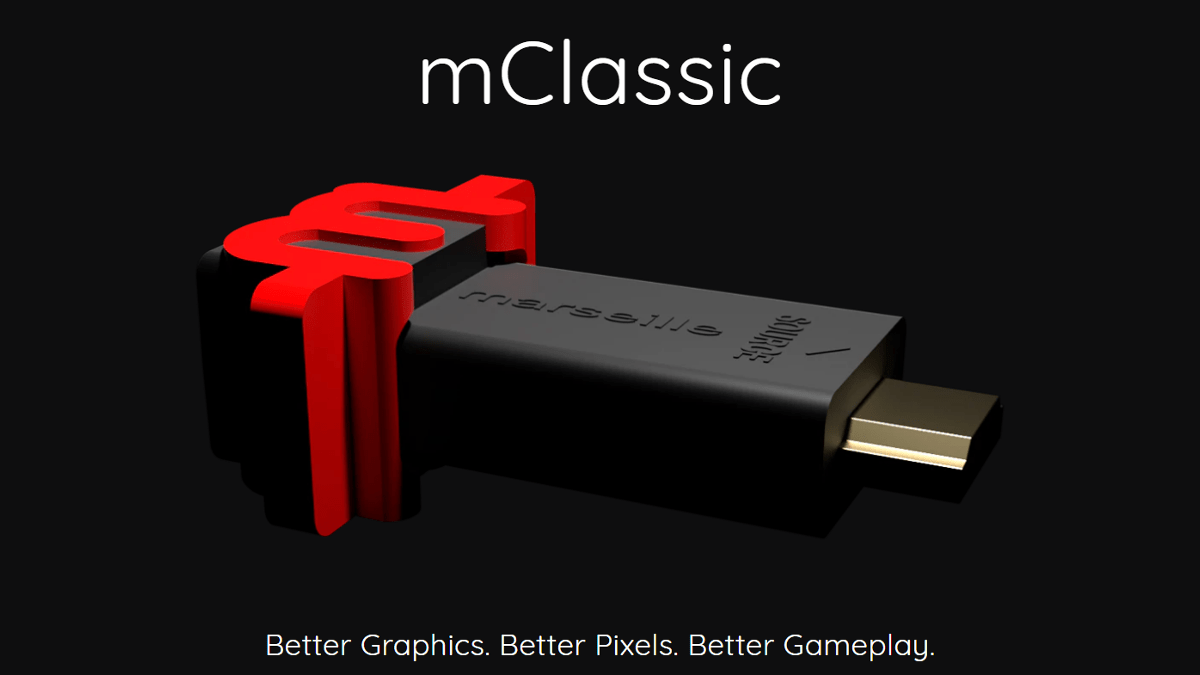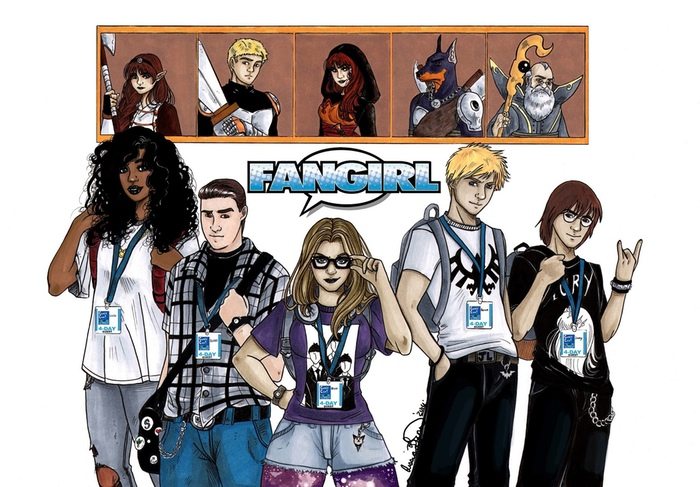Now there is a new Kickstarter that hopes to bring younger children to the table, let them roll some dice and slay some monsters. For parents who can’t wait for their children to sit and role-play with them, Heroes & Treasure might just be the game you are looking for.
What is the Heroes and Treasure Kickstarter?
Heroes and Treasure is a dungeon crawling RPG for 1-4 players aged 4+, and one grown-up “Quest Master,” to keep things going and supply real-world cookies. It’s a simple game system that sends pre-generated characters on a series of quests. Players work together to overcome their enemies and obstacles to reach their goal. The game was created by a game-loving dad, Jason Davis, whose company goes by the brilliant name of “Davis and Daughters.”

Heroes and Treasure comes with predefined map tiles on which events will play out. Characters and monsters are represented by cardboard standees, that move on the tiles’ grid pattern. During their quests players will fight monsters, cast spells, find treasure, bash down doors, and drink dubious looking potions. They’ll do this using a simple game mechanic, that uses custom dice, and they’ll do it with smiles on their faces!
Heroes and Treasure is looking for funding now. It’s EU friendly and the whole game will cost $59, plus shipping.
New to Kickstarter? Check out our crowdfunding primer, and visit our Kickstarter curated page for more projects we love.
What is in the box?
Here’s what you’ll get in the box. As ever, with Kickstarter, stretch goals may add to the loot.
- 8-page color Quest Master’s Rule Book.
- 24-page Campaign booklet, with 10 dungeon levels.
- 11 custom six-sided attack dice (in 7 designer colors).
- 12 large, double-sided map tiles for rooms and corridors.
- A deck of reference cards describing all the character classes and monsters in the campaign.
- Characters in 4 classes (male and female).
- 13 types of monster (with three difficulty levels each).
- Dozens of additional tokens for doors, fountains, shields, keys, treasure chests, potions, spells, trap doors, and other things one finds lying around in caves.
- 40 plastic card stands.
- 80 life counters.
I’ve only seen prototype components so far, but they all work well. The cardboard standees help younger ones with visualisation of what’s going on. The artwork has a cartoony feel but is stylish enough to appeal to children of all ages. The fact the game doesn’t use miniatures, as is the vogue for many Kickstarters these days, keeps the costs down, and makes them a more viable prospect for playing with small hands. That said, if Heroes and Treasure does well, some basic minis to paint with your kids would be an awesome addition to the game.

The key component of the Heroes and Treasure are the custom dice. They come in 7 colors, with each color having a specific purpose. They are all D6s; the game does not include the classic introduction to funny shaped dice. To avoid complex modifiers and remove too much math from the game, each die has a customised set of pips. All the dice are D6s but none of them have the numbers 1 through 6 on them. Read on to find out why!
How do you play Heroes and Treasure?
The basic mechanic will be familiar to anybody who has played Dungeons and Dragons. Play requires one person to take on the role of the “Quest Master” (QM) who guides the rest of the players. Everybody else takes on the role of a different character, and, banding together, use their new personas to take on bad guys and save the world. There may even be treasure involved.
What characters can be played?
Heroes and Treasure has four possible characters to choose from. Not all the slots have to be filled. The game can be played by 1-4 people, in addition to the QM. Available characters are:
- The Fighter – The hero who does the heavy lifting, chops wood and anything else that gets in the way.
- The Cleric – Heals the fighters (and the other characters) if they get a splinter.
- The Wizard – Reads books, casts spells. Can’t tell one end of a sword from the other.
- The Rogue – Quick-witted and faster fingered.
As you might expect for a basic RPG, the characters conform to the main character archetypes. They all have their strengths and weaknesses and work better as a team. That’s not to say you can’t play with only half (or a quarter) of the team, it will just be up to the QM to make sure the game stays in balance and isn’t too tough for the players. It is also possible to have more than one player using the same character type. If two players want to be wizards, that’s OK.

What does the QM do?
If you’ve read this far you probably know exactly what the roles of the QM are, but just in case, here’s a quick overview (or you can look here at the Dungeon Master Wikipedia entry).
As QM, it’s your job to guide your young adventurers through their quests. You are the storyteller, and they are the characters in the story. Tell them what they can see, where they are, and if anybody looks like they’re going to try to attack them. When something does try to attack them, you will take on the role of these creatures, at which point the game’s mechanics take over. Remember, it’s your job to ensure your young charges enjoy themselves. Heroes and Treasure is a cooperative game between characters, but also the GM too. You’re bound by an unwritten social contract not pulverize them with scimitar wielding goblins. This may mean bending the rules a little to make sure the heroes come out on top.
How does the game work?
The Heroes and Treasure Kickstarter will deliver 10 dungeon levels, each set out in the campaign booklet. The QM will take the adventurers through the game, level by level. Play session time per level is estimated at 45 mins. As characters progress through the game’s levels an overreaching story arc emerges giving players reasons to continue exploring beyond, “Because it’s there.”
Like all good first roleplaying adventures the action starts inside an inn, but before long (after a couple of paragraphs of reading), the characters will find themselves in a cavern complex hoping to solve a mystery and find some treasure.
Each dungeon level has a set map that uses a number of the (double-sided) dungeon tiles that come with the game. The QM will add a new tile each time the characters enter a new room. To get the most out of the game, you will need a reasonably sized table to allow you to fully lay out all the maps. A family sized dining table will be plenty big enough. A smaller table will be fine, you may just have to remove previously explored tiles as the characters progress. There is also the floor, which should provide ample space!

Players are free to move around the dungeon as they wish. When they move into a new room, they are likely to find a combatant in there, which means the game starts using its combat mechanics. If combat doesn’t immediately take place, players may try to talk to the dungeon denizens. Whether the game is a series of fights or something more nuanced, will depend on how the QM decides to play things and, probably, the ages of your players.
As well as assailants to fight, each level will have a problem to overcome, this might be as simple as finding the key for a locked chest, but becomes more complicated as the game progresses. At the end of each level, the players might be told that they return to the inn, or perhaps have found another hitherto unexplored area of the dungeon. In either case, the completion of a story chapter will take the characters up a level.
When characters complete a level and “level up” they may gain additional skills or spells. This process is significantly streamlined compared with most RPGs, but introduces the concept of characters getting stronger as they achieve more. NOTE: Not all levels see a change and some characters improve at different times to others, which is something that has to be managed in case of cries of, “It’s not fair!”
What are the combat mechanics?
Many RPG’s succeed or fail on their combat systems. Thanks to its custom dice, Heroes and Treasure’s system is simple to use and accessible for younger players. It’s the core of the game and it holds strong throughout.
Combat Order.
The party always acts in the order Rogue, Fighter, Wizard, Cleric. The players always go before the monsters and big monsters go before little ones.
Combat Actions.
During combat characters and monsters can do ONE of the following on their turn.
- Attack the nearest enemy. You don’t have to move to be adjacent to your enemies but you may only target the closest one.
- Spend a spell token to cast a spell (wizards or clerics only). These might be healing spells or spells that attack the opposition. Spells can target anybody in the room and are not subject to the “attack the nearest enemy” rule.
- Move up to 3 spaces.
- Use a potion.
- Equip a shield (for warriors only).
- Use any other item they have available.

How do the custom dice work?
Each character type (and monster type) attacks using a different dice. These have a custom number of pips on them, making some character types (and monster types) more effective in combat than others. For example, the Fighter uses a grey dice that has 2 twos and 2 ones on it (with the other faces being blank), whereas the wizard uses an orange dice that has only 3 ones on it, making wizard attacks far less effective. (Wizards can cast spells though, which can target anybody in the room and use a stronger die.)
Because the dice are different colors, it’s easy for players to remember which die they should be using each time they attack. There are no modifiers, the number rolled is the damage dealt. There are no opposed roles. Everything is kept simple and user-friendly. You roll the dice and that’s how much damage is caused. Tokens are provided to count up the damage characters and monsters have suffered.

Monster cards have three difficulty levels, which are used when there are differing numbers of player characters. If there are two adventures you use the easy level, three – medium, and four – hard.
Why back Heroes and Treasure?
First and foremost, because its great fun. If you’ve been looking for a way of introducing your children to RPGs but don’t have time to tailor your own system, this is pretty much a perfect way to do it. I grew up with Fighting Fantasy books and Heroes and Treasure feels like an interactive, group equivalent, of those.
If you’ve never played an RPG before, don’t fear. You’ll have a blast with Heroes and Treasure. It’s an excellent way to create stories with your children and to get them working together to achieve a common goal. The rules are simple allowing children as young as 5 to pick them up, but there’s enough in them to entertain children much older. My twelve-year-old loved playing this with his brothers.
How complex or simple the your game are is down to you as QM. The core mechanic is simple, but whether the game is a progression of fights or something more nuanced, filled with conversation and cunning plans, will depend on your group. Game length for each of the included adventures is just about right. The game is quick to set up and take down, and providing the QM isn’t doing too much improvising (though I whole-heartedly encourage doing so), you should finish a single dungeon level and be packed away in under an hour.
Whilst the 10 levels that come with the game will keep you entertained for a good length of time, the appeal of Heroes and Treasure will continue long beyond them. Creating new dungeon levels with the tiles is simple to do. Like all good RPG systems, it’s easy to Take Heroes and Treasure beyond what you get in the box and make it your own.
It will fire your children’s creativity.
One of the most unexpected boons of playing Heroes and Treasure is that it has inspired my children to make their own games and tell their own stories. My youngest who isn’t always that interested in games, loves it. He’s combined his enjoyment with his love of Wonder Woman and the Justice League, to create his own DC universe version of the game. So far we’ve had to break into Joker’s lair and take him down before he can escape. Each superhero has his own ability and hearing my 6-year-old talking about “movement dice” and “attack dice” filled me with an intense feeling of pride and joy.

The use of cardboard standees rather than plastic miniatures, not only keeps the cost down for backers, it also allows your kids to more easily create their own monsters and characters (we now have a host of DC inspired standees). The base monster and character cards are simple too. If your kids want to take their own creations into the dungeon, it would be fairly simple for them to do so, without breaking the game’s mechanics. Similarly, with some card and a bit of patience, they could make their own dungeon tiles too.
The TL;DR
Heroes and Treasure offers a great way to introduce RPGs to your kids. Its simple mechanic is easy to pick up and keeps the game running smoothly without stressing out over modifiers and opposed roles. The dungeon floor plans offer a great visual way into the game, making it simple for younger players to imagine what’s going on. The rewards and elevations through character levels are well placed giving players a reason to continue playing the game.
Like all RPGs, Heroes and Treasure fosters teamwork and cooperation and, beyond the box, it may inspire your children to design their own creations. Heroes and Treasure offers a way to take those first footsteps into a wider, magical world. It’s fun to play and a great way to bring the family together around the table, filled with the spirit of adventure and the desire to kill some bad guys.
We’ve really enjoyed playing Heroes and Treasure in our house, if you want to join in the fun, do check out the Kickstarter, now.




